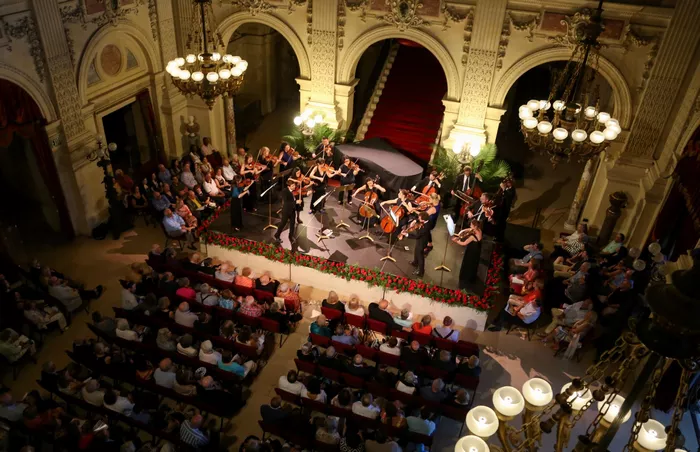Wolfgang Amadeus Mozart, a name synonymous with classical music mastery, has left an indelible mark on the world of symphonic composition. Revered for his unparalleled talent and prolific output, Mozart’s symphonies stand as pillars of musical brilliance, captivating audiences across generations. In this comprehensive exploration, we embark on a journey to unveil the best Mozart symphonies, delving into their exquisite craftsmanship, emotional depth, and enduring legacy.
1. Symphony No. 40 in G minor, K. 550
Arguably one of Mozart’s most celebrated works, Symphony No. 40 in G minor, K. 550, embodies the epitome of classical elegance and emotional intensity. Composed during a remarkably prolific period in 1788, this symphony showcases Mozart’s mastery of form, harmony, and orchestration.
The symphony opens with a hauntingly beautiful melody in the first movement, marked by its urgent rhythms and poignant harmonies. The second movement, a lyrical Andante, unfolds with tender grace, weaving a tapestry of melancholic melodies and introspective musings. The third movement, a spirited Menuetto, provides a contrast with its lively rhythms and playful exchanges, while the final movement bursts forth with unbridled energy and fervor, driving towards a thrilling conclusion.
Symphony No. 40’s enduring popularity can be attributed to its emotional depth, structural innovation, and timeless appeal. Its symphonic richness and dramatic intensity continue to captivate audiences and inspire musicians worldwide, cementing its status as one of Mozart’s finest achievements.
2. Symphony No. 41 in C major, K. 551 (“Jupiter”)
Nicknamed “Jupiter” for its grandeur and majesty, Symphony No. 41 in C major, K. 551, stands as a crowning jewel in Mozart’s symphonic repertoire. Composed in 1788 alongside Symphony No. 40, the “Jupiter” Symphony showcases Mozart at the height of his creative powers, pushing the boundaries of orchestral expression and formal complexity.
The symphony opens with a majestic introduction, leading into a vibrant Allegro vivace that brims with exuberance and vitality. The second movement, a graceful Andante cantabile, unfolds with lyrical beauty and emotional depth, inviting listeners into a world of serene introspection. The third movement, a spirited Menuetto, dances with charm and elegance, while the final movement emerges as a tour de force of contrapuntal mastery, featuring a dazzling display of fugal writing and thematic development.
Symphony No. 41’s grandeur, innovation, and technical brilliance place it among Mozart’s greatest achievements. Its symphonic splendor and intellectual depth continue to captivate audiences and musicians alike, affirming its status as a masterpiece of the classical era.
3. Symphony No. 25 in G minor, K. 183
A testament to Mozart’s precocious talent and creative genius, Symphony No. 25 in G minor, K. 183, stands as a youthful masterpiece of unparalleled intensity and emotional depth. Composed at the tender age of 17, this symphony reveals Mozart’s remarkable ability to imbue his music with profound emotion and dramatic power.
The symphony opens with a striking Allegro con brio, characterized by its brooding melodies and restless energy. The second movement, a tender Andante, unfolds with poignant lyricism and exquisite beauty, offering a moment of respite amidst the stormy drama. The third movement, a fiery Menuetto, crackles with rhythmic vitality and dynamic contrast, while the final movement bursts forth with relentless drive and urgency, culminating in a thrilling climax.
Symphony No. 25’s combination of youthful vigor, emotional intensity, and structural sophistication foreshadows the extraordinary achievements that would characterize Mozart’s later works. Its dramatic power and melodic richness continue to captivate audiences, earning it a well-deserved place among Mozart’s finest symphonic creations.
4. Symphony No. 35 in D major, K. 385 (“Haffner”)
Named in honor of the Haffner family, who commissioned the work for a celebration in Salzburg, Symphony No. 35 in D major, K. 385, radiates with festive exuberance and infectious energy. Composed in 1782, this symphony exemplifies Mozart’s mastery of orchestral color, melodic invention, and structural clarity.
The symphony opens with a jubilant Allegro con spirito, brimming with playful melodies and buoyant rhythms. The second movement, a graceful Andante, unfolds with lyrical elegance and tender expressiveness, offering a moment of serene contemplation. The third movement, a spirited Menuetto, dances with grace and charm, while the final movement bursts forth with irrepressible joy and exuberant energy, bringing the symphony to a triumphant conclusion.
Symphony No. 35’s infectious melodies, sparkling orchestration, and effervescent spirit make it a perennial favorite among audiences and performers alike. Its festive atmosphere and irresistible charm continue to captivate listeners, ensuring its enduring popularity and acclaim.
Conclusion
In the vast tapestry of Mozart’s symphonic output, these selected masterpieces shine with unparalleled brilliance, showcasing the composer’s extraordinary gifts and enduring legacy. From the poignant drama of Symphony No. 40 to the majestic grandeur of Symphony No. 41, from the youthful intensity of Symphony No. 25 to the festive exuberance of Symphony No. 35, each work offers a glimpse into the profound depths of Mozart’s musical genius.
As we continue to explore and cherish these timeless treasures, we are reminded of Mozart’s enduring impact on the world of music and his unparalleled ability to touch the human soul. Through his symphonies, Mozart speaks to us across the ages, inviting us to experience the transcendent beauty and profound emotion of his music. In doing so, he reaffirms his place as one of the greatest composers in the history of Western classical music, a beacon of inspiration and enlightenment for generations to come.

